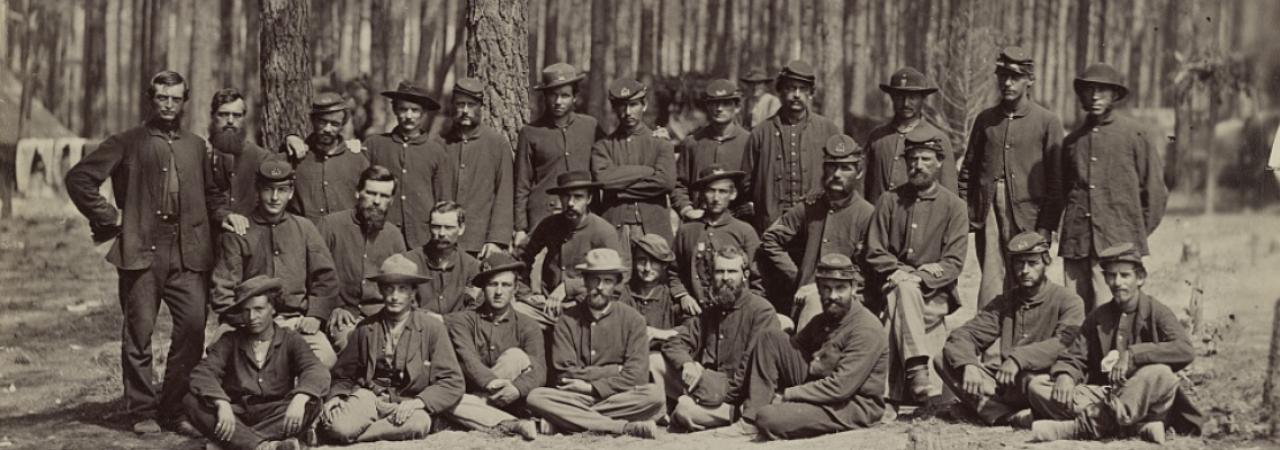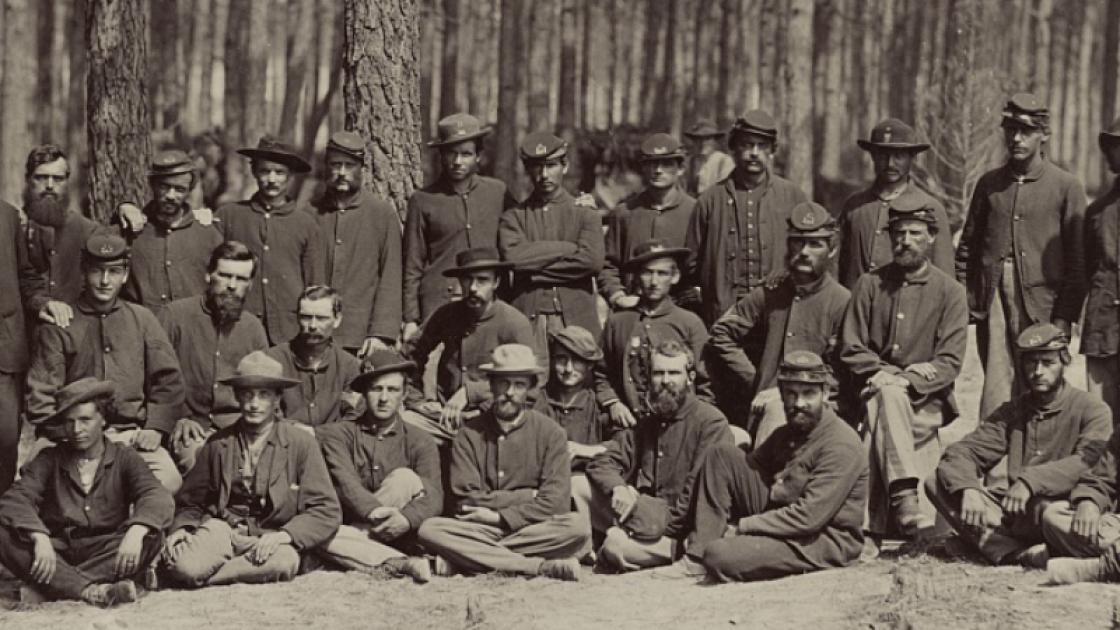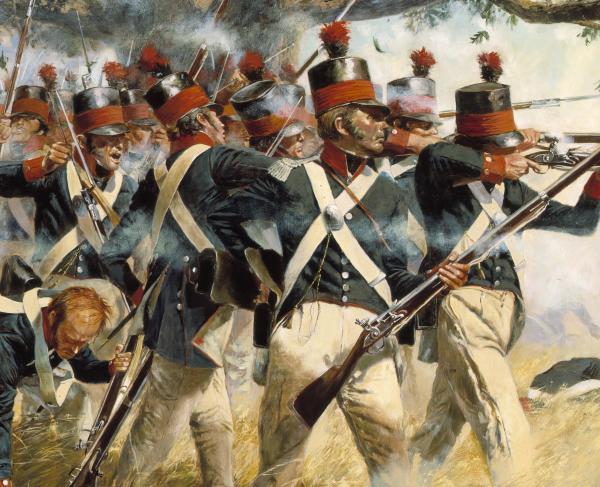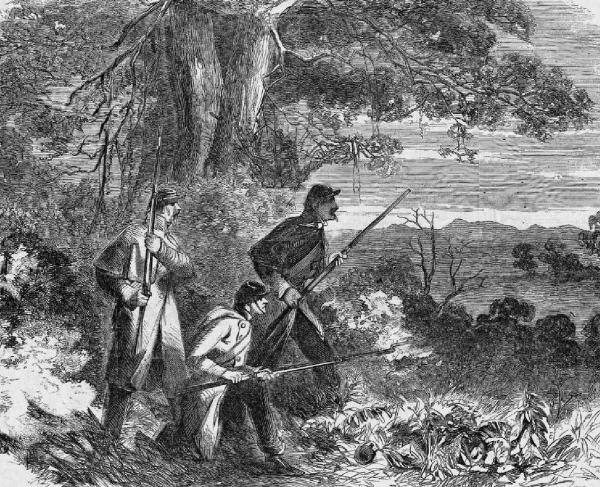
To fill the long hours between marches and battles, soldiers on both sides of the conflict found ways to amuse themselves. Reading was a popular way to pass the time. Soldiers read letters, newspapers, novels, the Bible, and any other printed material they could find. In fact, when stationed not far from enemy lines, they would occasionally trade newspapers with their opponents. Milton Barrett, a soldier in the 18th Georgia Volunteers, wrote in 1863:
Our regiment has just come off picket. We stood close together and could talk to each other, then when the officers were not present we exchanged papers and barter tobacco for coffee. The way we managed this is with a small boat. with sail set it will go over by itself then they send back in return the same way.
Soldiers who had not brought their own Bible could obtain a free copy from the U.S. Christian Commission. When they had no reading matter they wrote it themselves, sometimes even publishing their own camp or hospital newspapers. These newspapers often contained accounts of battles, poetry and essays, or propagandistic messages for the enemy. Some enterprising soldiers established literary or debating societies. Music was a popular diversion, as well—from informal singing around the fire to staged balls.

Gambling prevailed in every conceivable form—from horse races to louse races. Games like cards, chess, checkers, and dominoes could be played for money or simply for fun, were quiet, and easily carried in a knapsack. Card games such as poker, twenty-one, keno, and euchre were played on both sides of the line, but by the last years of battle decks of cards were hard to come by in the Southern ranks. Confederate soldiers obtained more from Union prisoners, fallen soldiers, or by trade with their Federal counterparts.
More athletic activities included wrestling, boxing, leapfrog, racing on foot or horseback, cricket, and—in at least one instance—bowling using cannon balls to knock down rough wooden pins. Baseball, played differently than it is today, was another popular sport. (The ball was soft and the field could contain either two or four bases. Runners were only considered “out” when the pitcher hit them with the ball.)
Semi-permanent winter quarters meant that soldiers had time to develop more ambitious ways to pass the time. Occasionally, they would establish their own theater companies, such as the “Essayons” of the Union’s 50th New York Engineers or the drama club of the Confederacy’s 9th Kentucky Infantry. Winter, with its attendant cold weather, also brought a new range of activities such as ice skating, sledding, and building “snow effigies.”
One of the more violent winter games was the snowball battle. Whole brigades would form up in lines, develop plans of attack, and set out to pummel the other side with hard missiles of snow and ice. Even officers joined in the battles, which often resulted in black eyes, bruises, and an occasional broken limb.
—Sources include The Life of Billy Yank and The Life of Johnny Reb by Bell Irvin Wiley (Louisiana State University Press, 1943 and 1952), The Fighting Men of the Civil War by William C. Davis (SMITHMARK Publishers, Inc., 1991) and The Confederacy is on Her Way Up the Spout: Letters to South Carolina, 1861-1864 by J. Roderick Heller, III and Carolynn Ayres Heller (The University of Georgia Press, 1992).


